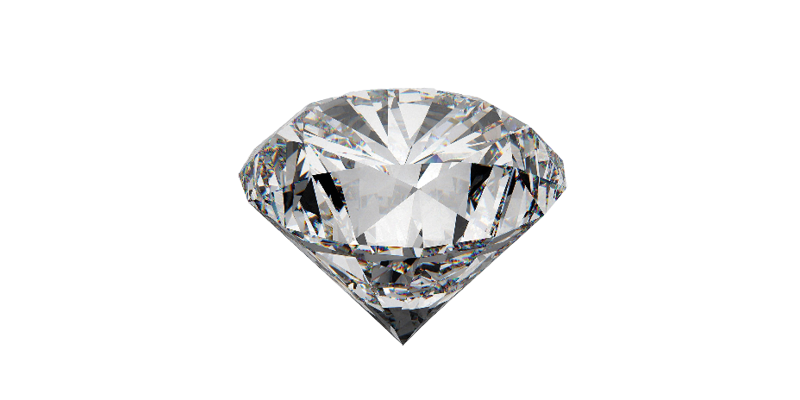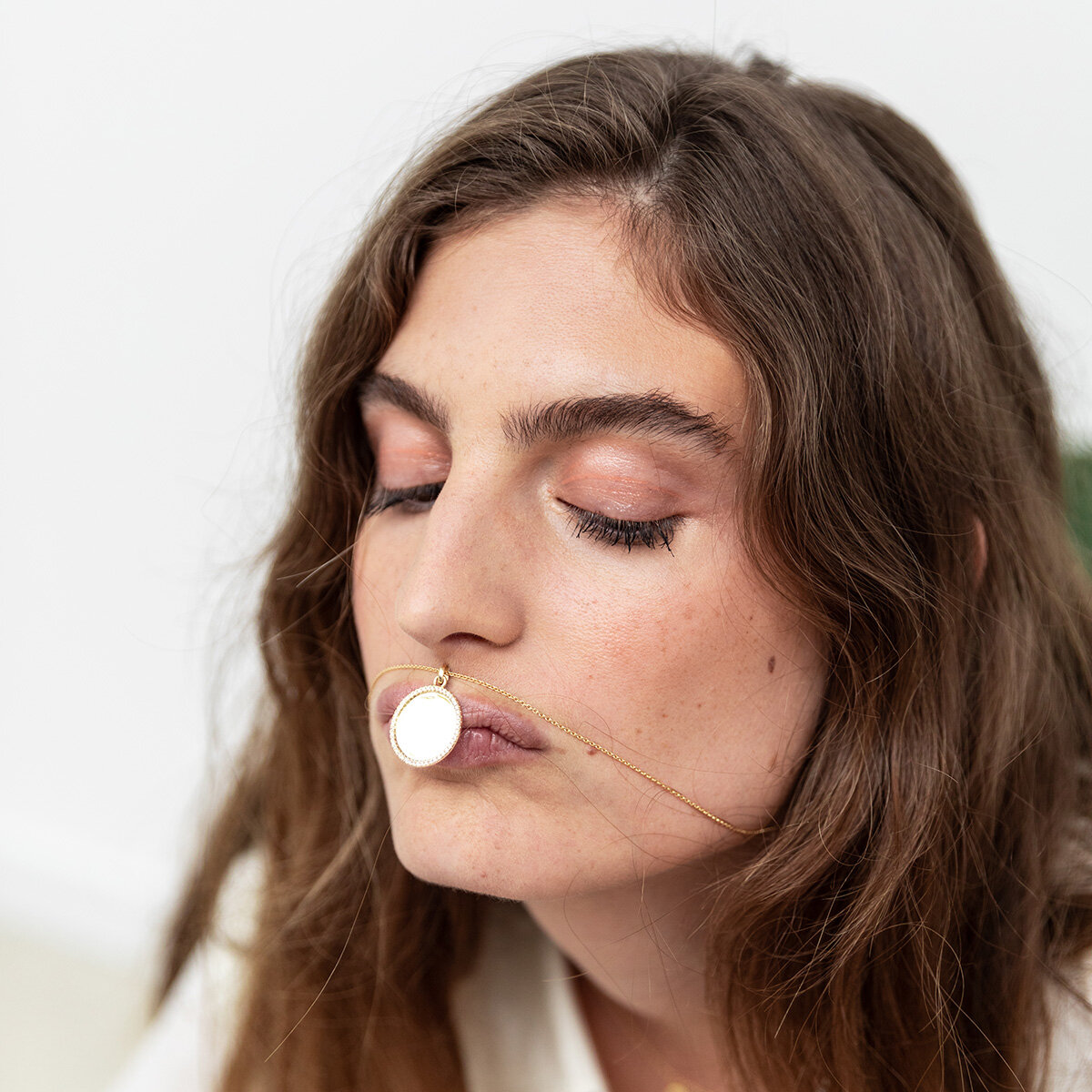DIAMOND
Thanks to its unprecedented refractive power among natural stones, the diamond is considered the king of jewelry. This play of light brings out the diamond's magnetic beauty. You can get lost in the colors it can take on, which is what makes diamonds, and every piece of jewelry they adorn, unique.
Where do diamonds come from?
Diamond, from the Greek "Adamas", meaning "unbreakable", "pure" and suggesting éternité and love, was first discovered following a volcanic eruption in India in 1000 BC. As its etymology suggests, diamond is the most solid stone in the world. It cannot be scratched, except in the presence of another diamond. Produced from volcanic rock, the most famous of which is Kimberlite, named after the town of Kimberley in South Africa, diamonds can now be found all over the world.
How to tell a diamond apart The 4 Cs
In 1931, the GIA (Gemological Institute of America) introduced a standard to define diamond quality and purity: The 4Cs: Carat, Color, Cut, Clarity. The 4Cs enable jewelers to distinguish diamonds by carat, color, cut and clarity.
Carat
The carat corresponds to the weight of a stone. For reference, 1 carat weighs 0.20 grams, divisible into 100 points. So a 0.5-carat diamond will weigh 50 points. The price of a diamond varies according to the stone's weight. The more carats a diamond has, the higher its price. On the other hand, for a diamond with twice as many points as another, its price can be 5 or 6 times higher!
Clarity
A diamond's purity is calculated according to the number of inclusions visible inside the diamond. It is, of course, impossible to estimate the number of inclusions with the naked eye. Experts use a 10x magnifying glass. IF" purity means a total absence of inclusions in the diamond, visible with a x10 magnifying glass. The more inclusions visible, the lower the purity. We then go from IF purity to VVS (Very Very Small inclusion(s)), VS (Very Small), SI (Small), etc., until these inclusions become visible to the naked eye.
Color
A diamond's purity is represented by its white color. It is therefore logical that the less color a diamond has, the purer and more noble it is. Consequently, jewelers qualify a diamond's nobility and purity according to its color. Diamond color is classified internationally by letters, from D to Z. The letter D represents a perfectly white diamond, and the letter Z a diamond with a slightly yellow hue. There are also other diamond colors, called "fancy diamonds".
Cut (Size)
The cut is essential to a diamond's clarity. Indeed, even if a diamond is extremely pure and colorless, if it is badly cut, it will lose all its intense luminosity. When a diamond is well cut, the light seems to remain trapped inside. The most important task for jewelers is therefore to cut the diamond perfectly to give it brilliance and brilliance.
HOW TO WEAR IT
It is very simple, the white colour of the diamond allows you to associate it with any metal, the result will always be exceptional:yellow, rose, whitegold, even black gold for more eccentricity, as well as platinum, a little will dress your diamond.
Diamond is a stone for all seasons, whether worn on a sweater in winter or a tank top in the sun. All it takes is a ray of sunlight to make it sparkle with the slightest movement.
"Diamonds are girl's best friend", this cult phrase from the musical "Gentlemen Prefer blondes" is no coincidence: diamonds are a sure bet!
Caring for your jewelry
You can clean your diamond by immersing it in a bath of lukewarm water with a little soap. Then gently brush the stone with a baby toothbrush. Rinse thoroughly and leave to dry.
In everyday life, take care of your jewelry by protecting it from toxic substances such as perfume, creams, chlorine, etc., but also by removing it when you are involved in sports or manual activities.
Poinçon 22 jewelry likes to be pampered. The more you take care of your jewelry, the better it will be with you throughout your life.
Find all our tips for caring for your jewelry here.
































